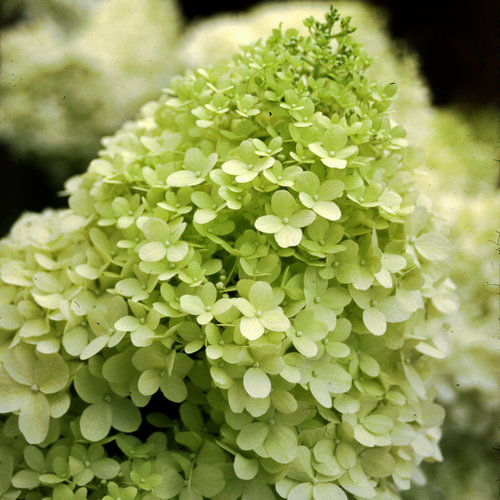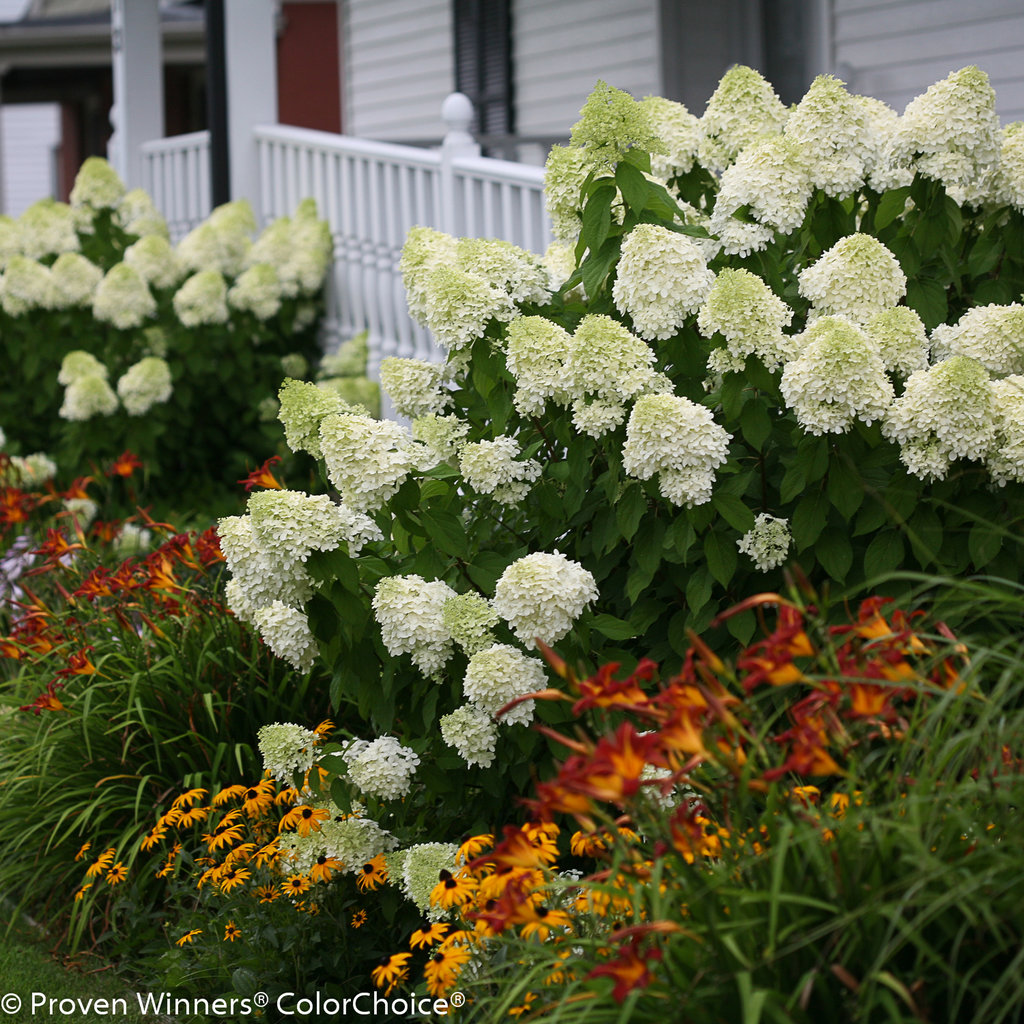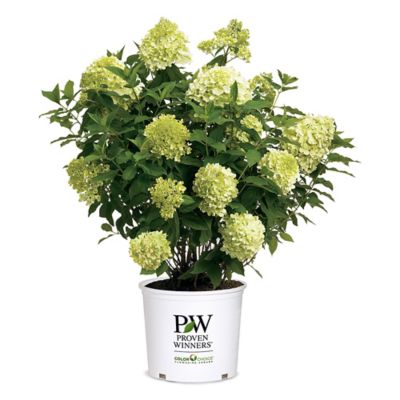Limelight Hydrangea: The Proven Winner That Will
Limelight Hydrangea: The Proven Winner That Will
Introduction
If you're looking for a hydrangea that is both beautiful and easy to care for, then the Limelight Hydrangea is the perfect choice for you. This award-winning shrub is known for its large, lime green flowers that bloom in late summer and early fall. As the flowers age, they gradually turn pink and red, creating a stunning display of color.
Limelight Hydrangeas are also very hardy, making them a good choice for a variety of climates. They are deer-resistant and drought-tolerant, and they can even withstand some frost.
If you're thinking about adding a Limelight Hydrangea to your garden, here's everything you need to know.
Main Content
Planting and Care
Limelight Hydrangeas are relatively easy to plant and care for. They prefer full sun in cold climates, but they can tolerate afternoon shade in warmer climates. They also need well-drained soil.
When planting a Limelight Hydrangea, dig a hole that is twice as wide and as deep as the root ball. Backfill the hole with soil, being careful not to bury the crown of the plant. Water the plant well after planting.
Limelight Hydrangeas need to be watered regularly, especially during the first year after planting. Once the plant is established, it can tolerate some drought.
In the spring, you can apply a balanced fertilizer to your Limelight Hydrangea. You can also prune the plant in the spring, but be sure to only remove dead or damaged branches.
Blooming
Limelight Hydrangeas typically bloom in late summer and early fall. The flowers are large, lime green in color, and they are held on upright stems. As the flowers age, they gradually turn pink and red.
The amount of flowers that your Limelight Hydrangea produces will depend on the amount of sunlight it receives. Plants that receive full sun will produce more flowers than plants that receive partial shade.
Pests and Diseases
Limelight Hydrangeas are relatively resistant to pests and diseases. However, they can be susceptible to leaf spot and powdery mildew. If you notice any signs of these diseases, you can treat them with a fungicide.
Propagation
Limelight Hydrangeas can be propagated by taking cuttings in the spring or fall. To take a cutting, simply cut a 4-6 inch stem from the plant and remove the leaves from the bottom half of the stem. Dip the cut end of the stem in rooting hormone and plant it in a pot of well-draining soil. Keep the soil moist and the temperature warm, and the cutting should root in a few weeks.
Conclusion
Limelight Hydrangeas are a beautiful and easy-to-care-for shrub that is perfect for a variety of landscapes. They are deer-resistant and drought-tolerant, and they can even withstand some frost. If you're looking for a hydrangea that will add beauty to your garden for years to come, then the Limelight Hydrangea is the perfect choice for you.
Limelight Hydrangea: The Showstopper of the Garden
If you're looking for a hydrangea that will add a touch of elegance to your garden, look no further than Proven Winners Limelight Hydrangea. This stunning plant features large, lime green flowers that open in summer and age to a beautiful pink or burgundy. Limelight Hydrangea is a hardy plant that can tolerate a wide range of conditions, making it a great choice for most gardens. It's also relatively easy to care for, so even beginner gardeners can enjoy its beauty.
If you're interested in learning more about Proven Winners Limelight Hydrangea, I encourage you to visit . This website has a wealth of information about the plant, including its care requirements, planting tips, and more. You can also find photos of Limelight Hydrangea in bloom, so you can see for yourself why it's such a popular choice for gardeners.
FAQ of proven winners limelight hydrangea
Q: What are the most important things to consider when planting a Limelight Hydrangea?
A: There are a few key things to consider when planting a Limelight Hydrangea:
- Sunlight: Limelight Hydrangeas prefer full sun in cooler climates, but they can tolerate partial shade in warmer climates.
- Soil: Limelight Hydrangeas need well-drained soil. If your soil is clay, you may need to add sand or compost to improve drainage.
- Water: Limelight Hydrangeas are drought-tolerant, but they will appreciate regular watering during the first year after planting.
- Fertilizer: Limelight Hydrangeas do not need a lot of fertilizer. A light application of fertilizer in the spring will help them to bloom well.
Q: How do I prune a Limelight Hydrangea?
A: Limelight Hydrangeas should be pruned in late winter or early spring. To prune, simply cut back the stems by one-third of their total height. This will help to encourage new growth and blooms.
Q: What are the different colors of Limelight Hydrangea flowers?
A: Limelight Hydrangea flowers start out as a pale green color, and then they gradually turn pink or red as the summer progresses. The exact color of the flowers will depend on the pH of the soil. In alkaline soils, the flowers will be more pink, while in acidic soils, the flowers will be more red.
Q: What are some common pests and diseases of Limelight Hydrangeas?
A: Limelight Hydrangeas are generally resistant to pests and diseases. However, they can be susceptible to aphids, spider mites, and powdery mildew. If you notice any pests or diseases on your Limelight Hydrangea, you can treat them with an insecticidal soap or fungicide.
Q: How long do Limelight Hydrangeas live?
A: Limelight Hydrangeas can live for many years. With proper care, they can live for up to 50 years.
Image of proven winners limelight hydrangea
5 different images of "proven winners limelight hydrangea" from Pinterest:
- Image 1: A full grown Limelight Hydrangea in full bloom. The flowers are a vibrant green color, and they are arranged in large, conical clusters. The plant is surrounded by lush green foliage.

- Image 2: A close-up of the flowers of a Limelight Hydrangea. The flowers are a delicate shade of green, and they have a slightly fuzzy texture. The centers of the flowers are filled with tiny, yellow stamens.
- Image 3: A Limelight Hydrangea in the fall. The flowers have started to fade, and they are now a beautiful shade of pink. The leaves on the plant have also turned a brilliant shade of red.

- Image 4: A Limelight Hydrangea in a container. The plant is well-maintained, and it is covered in large, green flowers. The container is a simple white pot, which allows the beauty of the plant to shine through.

- Image 5: A Limelight Hydrangea in a garden setting. The plant is surrounded by other flowers, including roses and lilies. The hydrangea is the tallest plant in the garden, and it provides a dramatic focal point.


Post a Comment for "Limelight Hydrangea: The Proven Winner That Will"